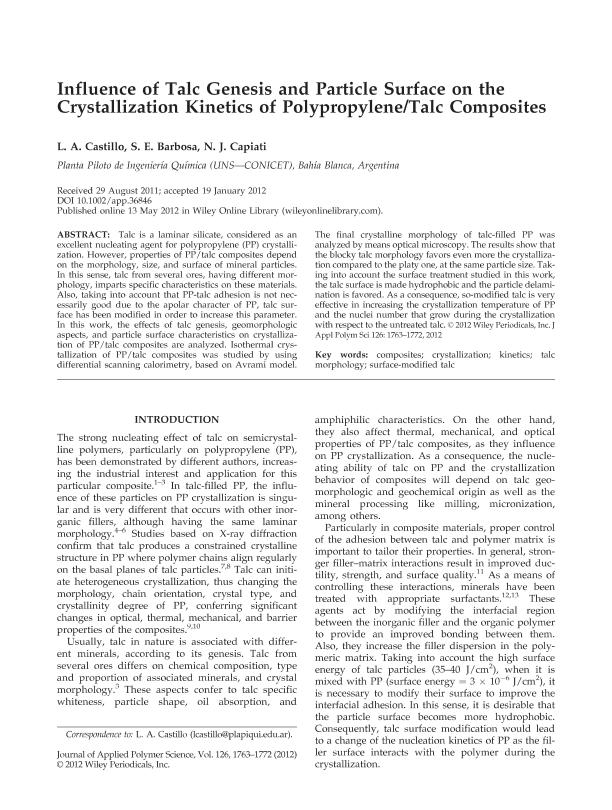Artículo
Influence of talc genesis and particle surface on the crystallization kinetics of polypropylene/talc composites
Fecha de publicación:
08/12/2012
Editorial:
John Wiley & Sons Inc
Revista:
Journal of Applied Polymer Science
ISSN:
0021-8995
e-ISSN:
1097-4628
Idioma:
Inglés
Tipo de recurso:
Artículo publicado
Clasificación temática:
Resumen
Talc is a laminar silicate, considered as an excellent nucleating agent for polypropylene (PP) crystallization. However, properties of PP/talc composites depend on the morphology, size, and surface of mineral particles. In this sense, talc from several ores, having different morphology, imparts specific characteristics on these materials. Also, taking into account that PP-talc adhesion is not necessarily good due to the apolar character of PP, talc surface has been modified in order to increase this parameter. In this work, the effects of talc genesis, geomorphologic aspects, and particle surface characteristics on crystallization of PP/talc composites are analyzed. Isothermal crystallization of PP/talc composites was studied by using differential scanning calorimetry, based on Avrami model. The final crystalline morphology of talc-filled PP was analyzed by means optical microscopy. The results show that the blocky talc morphology favors even more the crystallization compared to the platy one, at the same particle size. Taking into account the surface treatment studied in this work, the talc surface is made hydrophobic and the particle delamination is favored. As a consequence, so-modified talc is very effective in increasing the crystallization temperature of PP and the nuclei number that grow during the crystallization with respect to the untreated talc.
Palabras clave:
Composites
,
Crystallization
,
Kinetics
,
Surface-Modified Talc
,
Talc Morphology
Archivos asociados
Licencia
Identificadores
Colecciones
Articulos(PLAPIQUI)
Articulos de PLANTA PILOTO DE INGENIERIA QUIMICA (I)
Articulos de PLANTA PILOTO DE INGENIERIA QUIMICA (I)
Citación
Castillo, Luciana Andrea; Barbosa, Silvia Elena; Capiati, Numa Jose; Influence of talc genesis and particle surface on the crystallization kinetics of polypropylene/talc composites; John Wiley & Sons Inc; Journal of Applied Polymer Science; 126; 5; 8-12-2012; 1763-1772
Compartir
Altmétricas




